Sacred Realm: Blessings & Good Fortune across Asia closes this Sunday
Posted on Mar 14, 2017
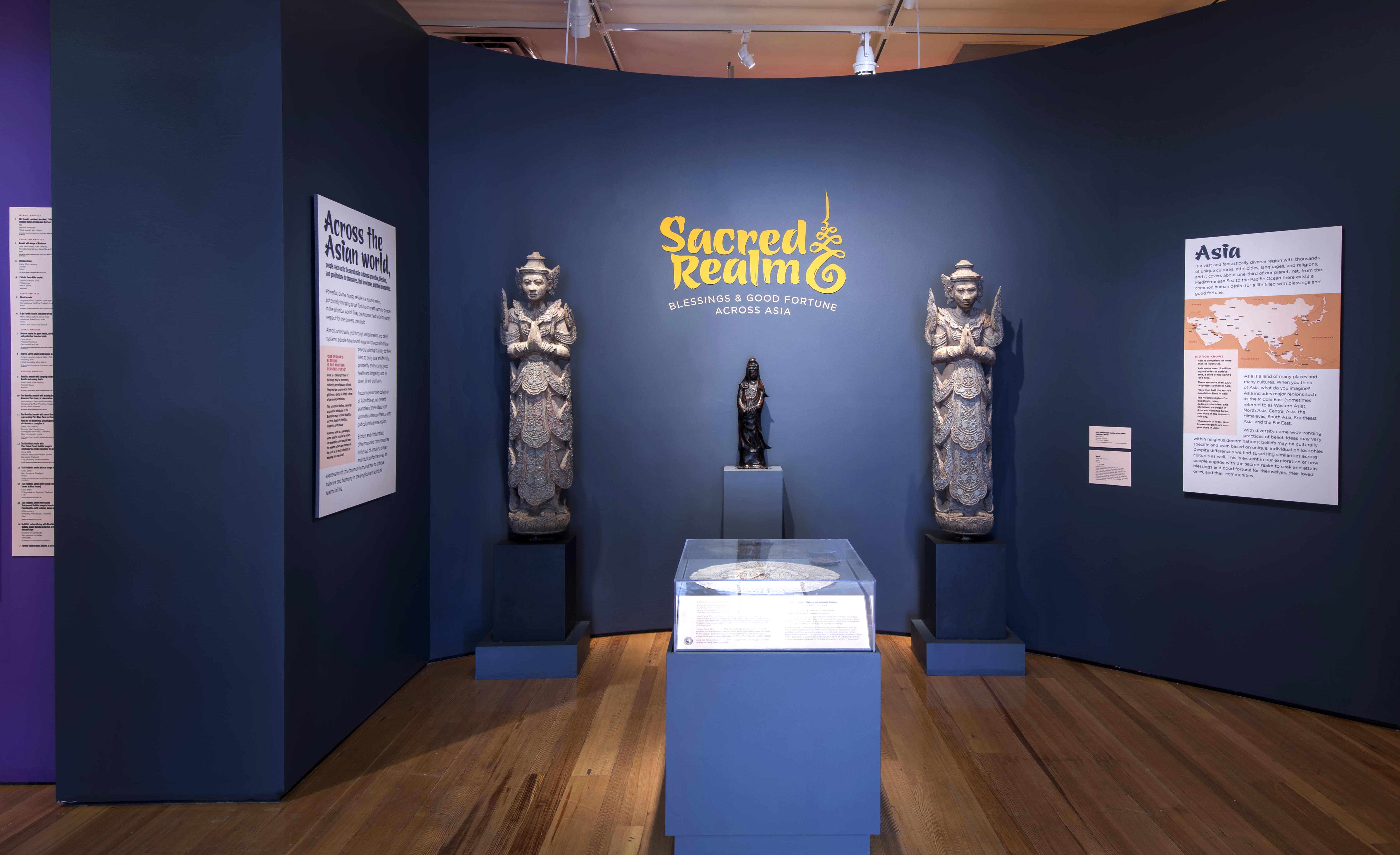
From Felicia Katz-Harris, Senior Curator & Curator of Asian and Middle Eastern Folk Art
As the current exhibition, Sacred Realm: Blessings and Good Fortune across Asia comes to a close and we prepare for its final program, I take this moment to reflect on the exhibition’s development.
Sacred Realm explores the idea that people across Asia, a region of fantastic diversity, engage the sacred realm in different ways to similarly achieve blessings and good fortune for themselves, their loved ones, and their communities. The exhibit’s three main sections demonstrate different practices of belief that help people spiritually attain such blessings using: amulets and talismans; divine communication (prayer); and ritual performance.
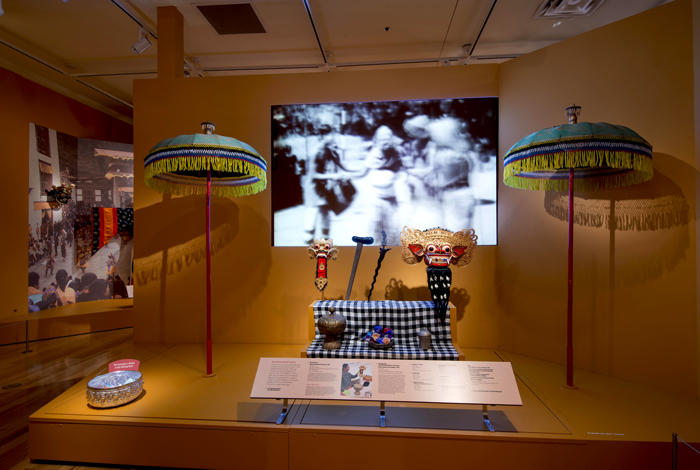
The exhibit idea grew out of a directive to develop a project based primarily on the museum’s own Asian collection. In a sense, the exhibition is a survey of the Asian collection, but instead of geographic or chronological organization (how most museums present surveys of their Asian collections), this exhibit is organized thematically. The display is meant to reflect the heterogeneity of Asian culture and variations of cultural interpretation found in religious expression.
In providing multiple perspectives, we engaged multiple communities. We worked with New Mexico rabbis, Imam, Asian and Middle Eastern religious scholars, Thai Buddhist monks, Tibetan Buddhist monks, ritual dancers, practitioners, magical tattoo masters, shamans, and artists in the planning, development, interpretation, and installation of Sacred Realm. We even worked with a local Feng Shui master to incorporate contemporary Feng Shui principles into the gallery design.
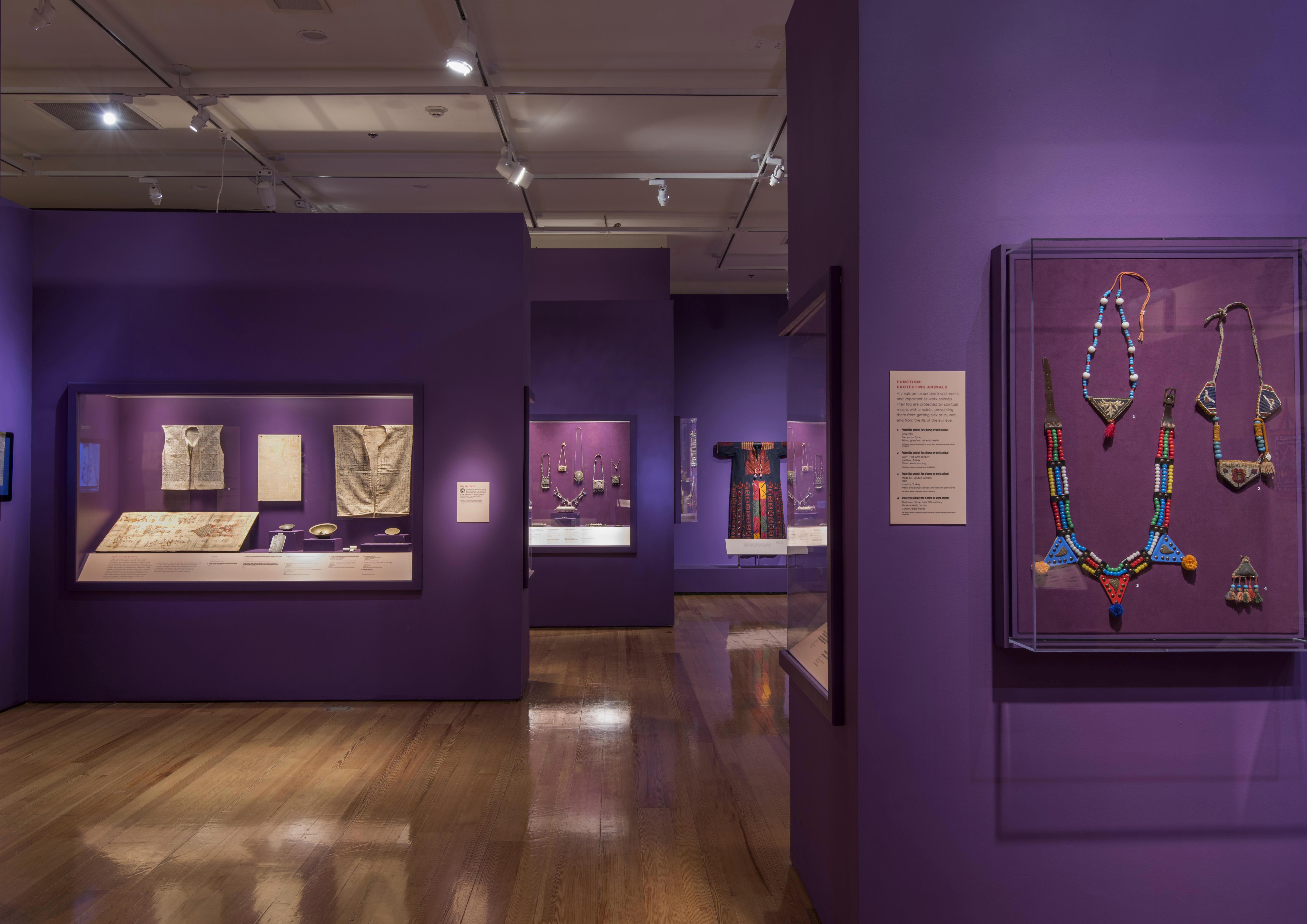
Special collaborations were rewarding experiences. His Imminence Khentul Rinpoche (visiting from the Drepung-Loseling Monastery in India) was invited into our collection vaults to select items to represent Tantric Buddhist practice in relation to the theme of the exhibition. Members from the Tibetan Association of Santa Fe later helped install the ritual items and Buddhist images in a 19th century altar from Eastern Tibet. As well, from Bali, Indonesia, Ida Bagus Anom Suryawan - master woodcarver and village Brahmin - helped stage the exhibit section that explores Balinese ritual dance as a means to protect and bless communities. The museum holds several of this artist’s contemporary masks. The artist helped decide on using historic footage from the 1930s by Margaret Mead and Gregory Bateson to serve as a backdrop for his 21st century masks. The juxtaposition of the old film with the new masks shows historic continuity of a tradition that has deep meaning for the mask maker’s community.
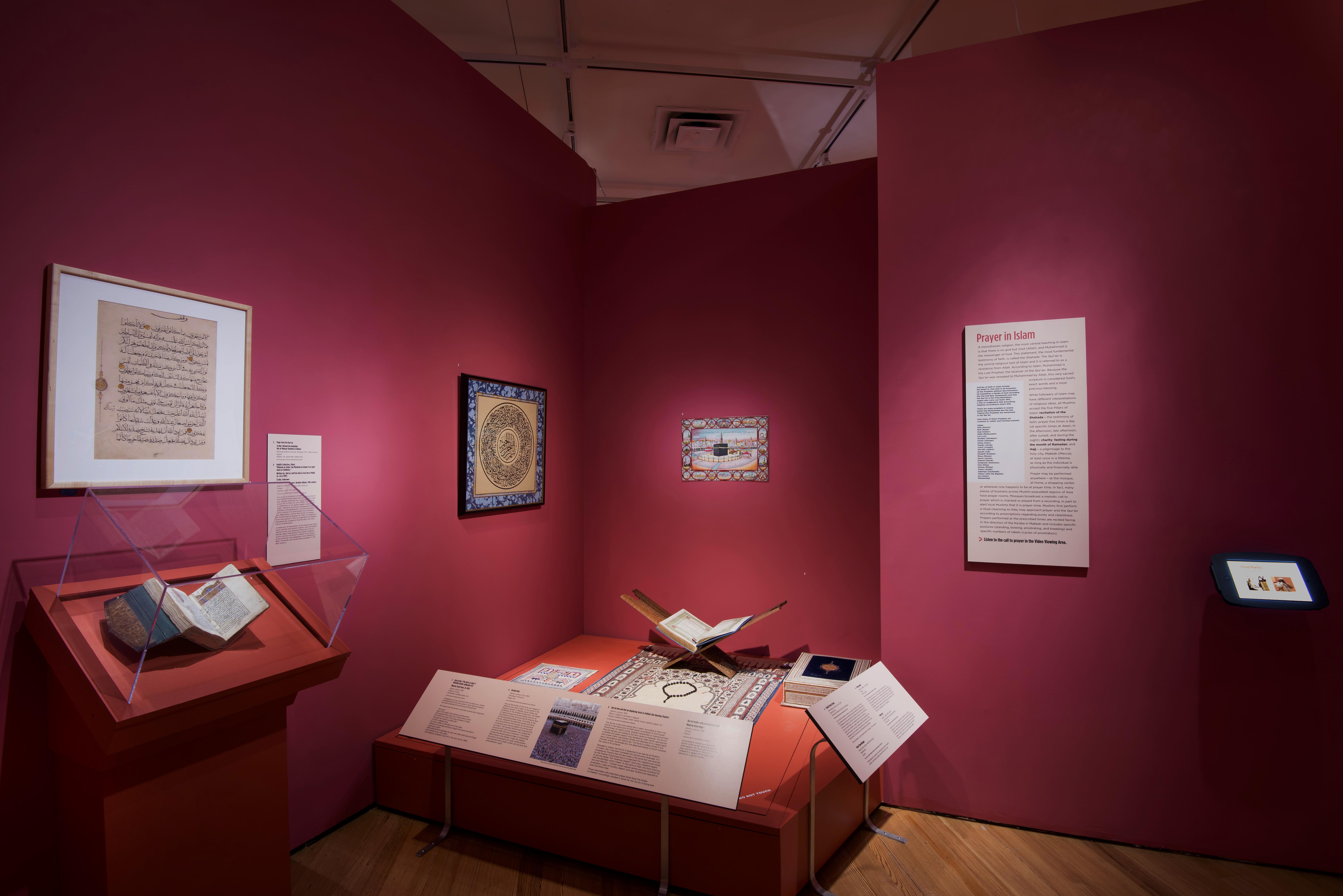
The gallery’s layout revolves around certain sacred objects. For example, we extended walls and created “privacy” for certain objects: the Iraqi Torah and the Lebanese Qur’an are displayed facing a specific direction and are not “exposed” to images that could be perceived to conflict with them. Rabbis agreed that the Torah should be open to the Ten Commandments – a passage they felt many visitors would be able to relate to. We also complied with the Imam’s request that interpretive text for Islamic prayer practice include the names of all twenty-five Prophets of Islam; he wanted to point out to visitors that many of the Prophets of Islam are also significant figures in Christianity and Judaism.
Beyond the information provided on physical labels iPads provide layers of meaning: magical tattoos and their meanings; in-depth information about amulets on display; videos of consecration rituals, ritual dance performances, prayer practice, and more. “Help-yourself” activities in the gallery provide visitors of all ages with multiple opportunities to participate. The exhibit is as deep with knowledge as the viewer wants to go.
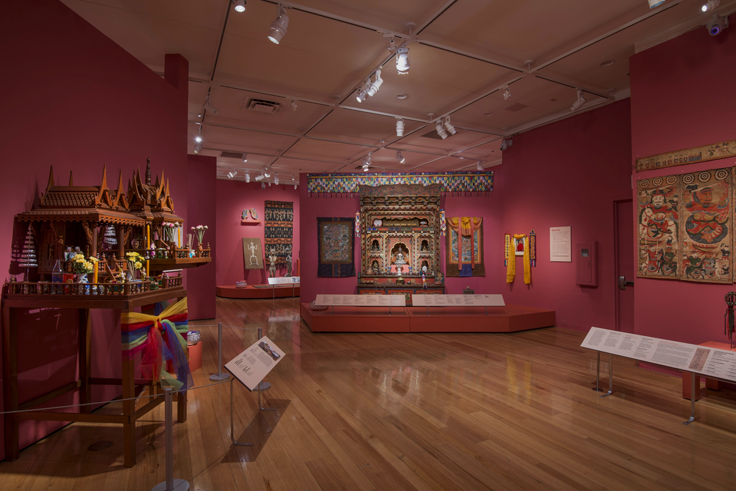
I cannot thank enough those special individuals who volunteered and/or gave their time, knowledge, and blessings in developing and installing this meaningful exhibition. Thanks to their participation, it recognizes diversity and encourages the contemplation of what brings us together in the face of troubled times out there in the wider world.
Sacred Realm: Blessings & Good Fortune across Asia closes this Sunday, March 19, 2017. From 1:00- 4:00 PM, Piers Watson will give a lecture and a demonstration of a lost wax bronze casting technique that he learned while living among the Bastar people in India. With his fire pit alight outside on the Museum’s plaza, we will take all the thousands of paper offering flowers that visitors made, and we have saved, during the run of the exhibition and we will burn them as offerings of gratitude to our community. Please join us!
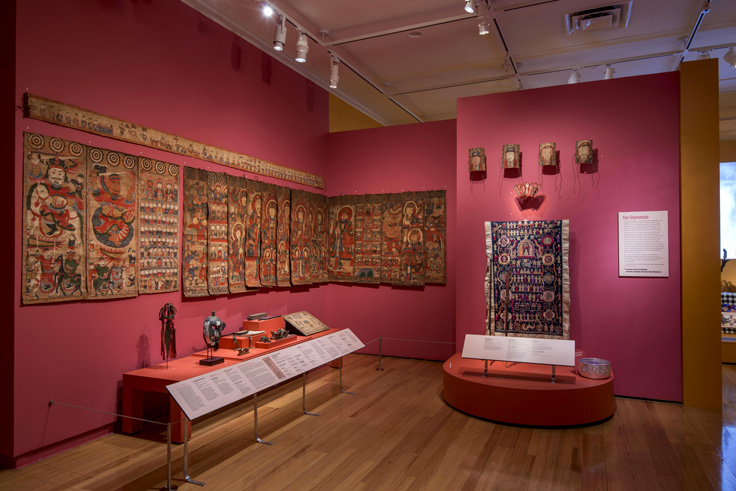
Latest Posts
-
COVID-19 Embroideries
- Nov 10, 2022 -
Guru Mahatmya
- Jul 20, 2021 -
The COVID-19 Pandemic from an Indigenous Perspective
- Feb 17, 2021 -
Docent's Choice
- Jul 23, 2020 -
Folk Art Piece of the Week - Docent's Choice
- Jul 02, 2020